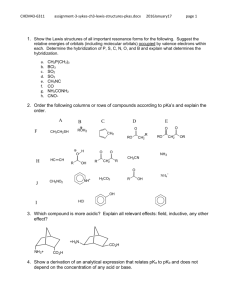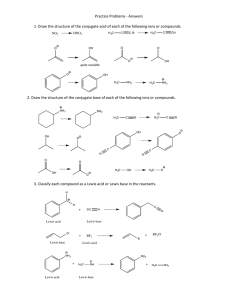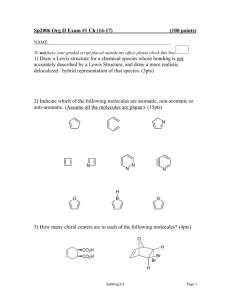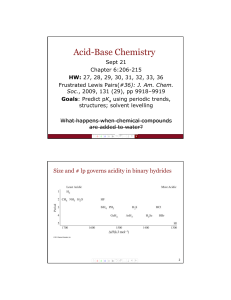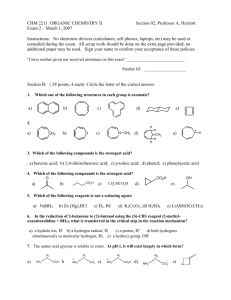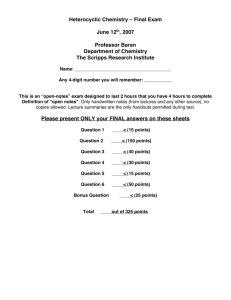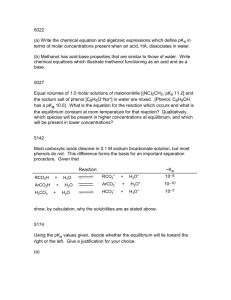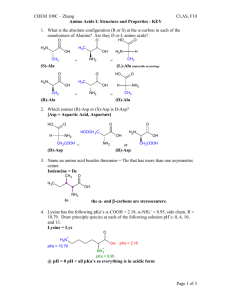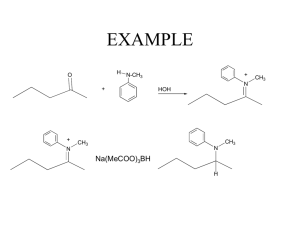CHE 230 F2012 Ex1 KEY
advertisement
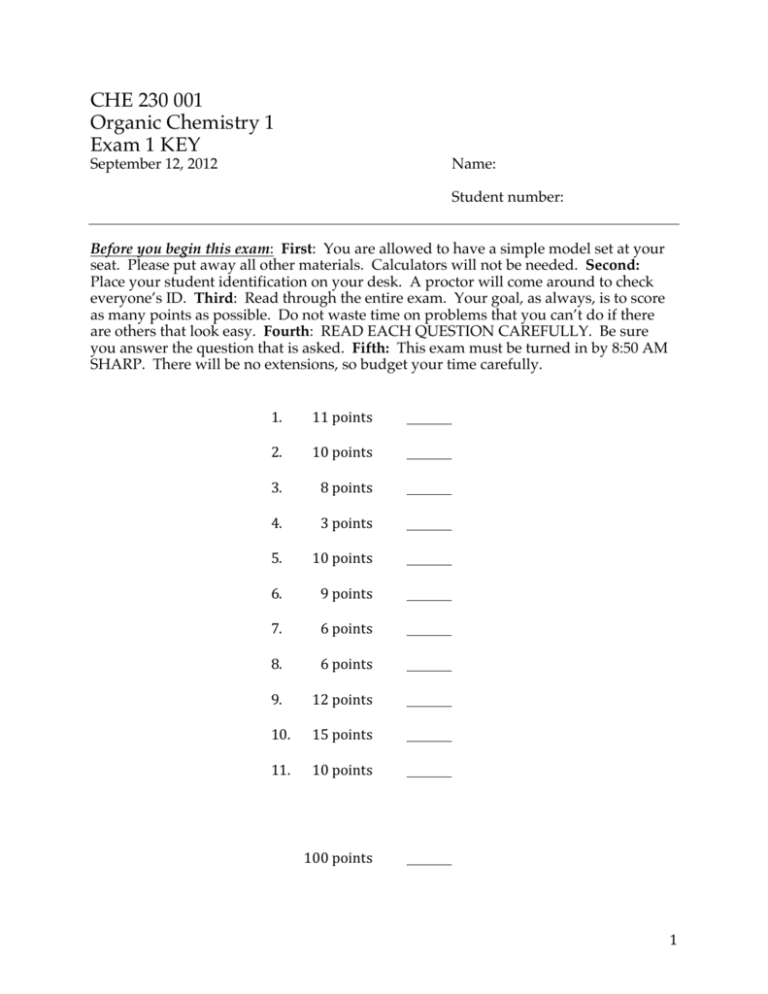
CHE 230 001 Organic Chemistry 1 Exam 1 KEY September 12, 2012 Name: Student number: Before you begin this exam: First: You are allowed to have a simple model set at your seat. Please put away all other materials. Calculators will not be needed. Second: Place your student identification on your desk. A proctor will come around to check everyone’s ID. Third: Read through the entire exam. Your goal, as always, is to score as many points as possible. Do not waste time on problems that you can’t do if there are others that look easy. Fourth: READ EACH QUESTION CAREFULLY. Be sure you answer the question that is asked. Fifth: This exam must be turned in by 8:50 AM SHARP. There will be no extensions, so budget your time carefully. 1. 11 points 2. 10 points 3. 8 points 4. 3 points 5. 10 points 6. 9 points 7. 6 points 8. 6 points 9. 12 points 10. 15 points 11. 10 points 100 points 1 1. (11 points) Draw the Lewis dot structure for the molecule shown below. Please draw the valence electrons as dots. Do not draw bonds or non-­‐bonding electron pairs as lines. In both cases, all atoms are neutral and (other than H) all have complete octets. Be sure that you draw all of the valence electrons. H C H N C O H 2. (10 points) Determine the formal charges on the indicated atoms in the structures below. All non-­‐bonding electrons are shown. H O H C H H H Charge on O = +1 C O H N H -1 Charge on C = Charge on C = +1 Charge on O = 0 Charge on N = 0 3. (8 points) What is the hybridization of each nitrogen atom in nicotine? What specific orbital does the lone pair of each nitrogen reside in? N N Hybridization: Lone pair in Hybridization: Lone pair in Nicotine sp3 sp3 hybrid orbital sp2 sp2 hybrid orbital 2 4. (3 points) Shown below are two resonance forms for dimethyl sulfoxide (DMSO). It is known that the bonding arrangement around the sulfur atom in DMSO is roughly tetrahedral. Circle the resonance form that is the major contributor to the hybrid. O O S S 5. (10 points) Circle the MOST acidic compound in each pair below. O O a) CH3 S OH OH O b) NH2 OH c) CO2H Br CO2H F d) OH OH e) CO2H CO2H 3 6. (9 points) Which is the longer of the labeled bonds in each compound? Cl OH Br H2N 1 N 3 2 4 3 1 NH2 5 6 6 7. (6 points) Circle structure(s) that are valid resonance forms of compound A. O O O O A 8. (6 points) What are the pKa’s for the most acidic protons in the compounds below? Your answers need to be within ±2 pKa units to earn credit (± 5 for pKa’s above 40). a) O pKa = b) 20 O H N pKa = 4.7 OH c) O CH3 CH2 CH2 CH3 pKa = 47 4 9. (12 points) For each of the acid-­‐base equilibria below, predict whether Keq is greater than 1 or less than 1. Write your answers to the right of each equation. + H2O + Na OH OH O Na >1 NH2 NH2 + NH4 H2N + NH3 NH H2N >1 NH2 O O O + F O + F O OH Na O Na OH >1 10. (15 points) Give the names of the circled functional groups in the compound shown below. Hydroxyl Carboxylic acid Amide O N H OH OH O N OH Atorvastatin (Lipitor) F 5 10. Continued… Ester Aldehyde O O CH3 O H OH "Oil of Wintergreen" Cinnamon flavoring 11. (10 points) The pKa of methane is 45 -­‐ 50, but the pKa of nitromethane is 10. Draw the conjugate base and explain (one sentence!) why nitromethane is so acidic. Do not exceed the space provided. O CH3 O N CH2 O N O CH2 O Nitromethane N O Conjugate base of nitromethane One sentence explanation: Unlike the CH3- anion, the nitromethane anion is stabilized by resonance, so the conjugate acid (nitromethane) is stronger than methane. END OF EXAM 6
